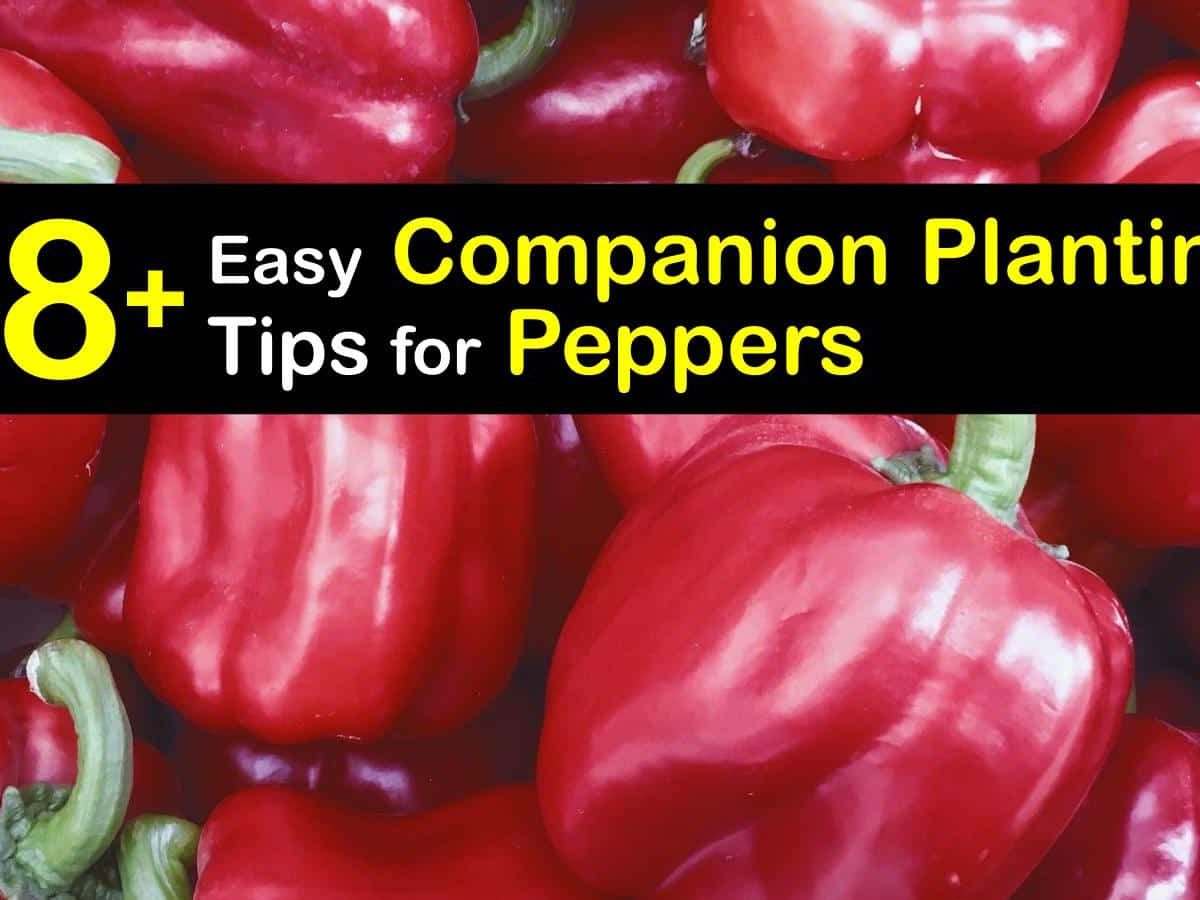The Ultimate Guide To Pepper Companion Planting
The Ultimate Guide to Pepper Companion Planting
Pepper companion planting is a gardening technique that involves planting certain types of plants together to improve the growth and health of both plants. By carefully selecting companion plants, you can help to deter pests, attract beneficial insects, and improve the overall health of your pepper plants.
In this blog post, we will discuss the benefits of companion planting with peppers, as well as some of the best companion plants for peppers. We will also provide some tips on how to successfully plant companion plants in your garden.
Benefits of Companion Planting with Peppers
There are many benefits to companion planting with peppers. Some of the most important benefits include:
- Deterrent to pests. Certain plants can help to deter pests from your pepper plants. For example, marigolds, nasturtiums, and chives are all known to repel pests such as aphids, beetles, and spider mites.
- Attraction of beneficial insects. Other plants can attract beneficial insects to your garden, which can help to control pests. For example, dill, fennel, and cilantro attract pollinators such as bees and butterflies. These pollinators help to pollinate your pepper plants, which can lead to a better harvest.
- Improved soil health. Some plants can help to improve the soil health around your pepper plants. For example, beans and peas are nitrogen-fixing plants, which means they can add nitrogen to the soil. This can help to improve the growth and health of your pepper plants.
- Reduced competition for resources. By planting companion plants that have different nutrient and water requirements, you can help to reduce competition for resources between your pepper plants and other plants in your garden. This can help to improve the overall health of all of your plants.
Best Companion Plants for Peppers
There are many different plants that can be companion plants for peppers. Some of the best companion plants for peppers include:
- Herbs: Herbs are a great choice for companion plants for peppers because they can help to deter pests and attract beneficial insects. Some of the best herbs to plant with peppers include basil, dill, fennel, cilantro, and chives.
- Alliums: Alliums, such as onions, garlic, chives, and leeks, are also good companion plants for peppers. They can help to deter pests and improve the soil health around your pepper plants.
- Carrots: Carrots are another good companion plant for peppers. They can help to improve the soil health around your pepper plants and also provide shade for the carrot tops.
- Beans: Beans are a nitrogen-fixing plant, which means they can add nitrogen to the soil. This can help to improve the growth and health of your pepper plants.
- Sunflowers: Sunflowers are a tall plant that can help to provide shade for your pepper plants. They can also help to attract beneficial insects to your garden.
Tips for Planting Companion Plants with Peppers
When planting companion plants with peppers, there are a few things you should keep in mind:
- Choose the right companion plants. Not all plants are compatible with peppers. Be sure to choose companion plants that have similar growing conditions and that will not compete for resources.
- Plant companion plants in the right location. When planting companion plants with peppers, it is important to plant them in the right location. Some companion plants, such as sunflowers, can grow quite tall and may shade your pepper plants. Be sure to plant companion plants that will not shade your pepper plants.
- Space companion plants properly. When planting companion plants with peppers, it is important to space them properly. Some companion plants, such as beans, can spread quite quickly. Be sure to space companion plants far enough apart so that they have enough room to grow.
- Water and fertilize regularly. Companion plants need to be watered and fertilized regularly, just like pepper plants. Be sure to water and fertilize your companion plants as needed to ensure their health and growth.
Conclusion
Pepper companion planting is a great way to improve the growth and health of your pepper plants. By carefully selecting companion plants and planting them in the right location, you can help to deter pests, attract beneficial insects, and improve the overall health of your pepper plants.
FAQ of pepper companion
- What is Pepper Companion?
Pepper Companion is a plant that is often grown alongside peppers to help deter pests and diseases. It is a member of the mint family and has a strong, peppery scent that can repel insects. Pepper Companion can also help to improve the soil quality around peppers, making them more resistant to pests and diseases.
- What are the benefits of planting Pepper Companion with peppers?
There are several benefits to planting Pepper Companion with peppers. First, as mentioned above, Pepper Companion can help to deter pests and diseases. This can save you time and money on pesticides and fungicides. Second, Pepper Companion can help to improve the soil quality around peppers, making them more resistant to pests and diseases. Third, Pepper Companion can help to attract beneficial insects, such as ladybugs and lacewings, which can help to control pests. Finally, Pepper Companion can add a splash of color to your garden.
- How do I plant Pepper Companion with peppers?
Pepper Companion can be planted either directly in the ground or in containers. If planting directly in the ground, space the plants 12-18 inches apart. If planting in containers, use a pot that is at least 12 inches in diameter. Plant the Pepper Companion seeds or seedlings about 1 inch deep in the soil. Water the plants regularly, especially during hot, dry weather.
- How do I care for Pepper Companion?
Pepper Companion is a relatively easy plant to care for. It prefers full sun but can tolerate partial shade. It is also drought-tolerant, but will appreciate regular watering during hot, dry weather. Pepper Companion does not require a lot of fertilizer, but you can fertilize it with a balanced fertilizer every few weeks during the growing season.
- What are some common problems with Pepper Companion?
The most common problem with Pepper Companion is powdery mildew. Powdery mildew is a fungal disease that can cause white, powdery spots to appear on the leaves of the plant. To prevent powdery mildew, water the plants at the base and avoid overhead watering. You can also spray the plants with a fungicide, such as neem oil or copper fungicide.
Image of pepper companion
5 different images of "pepper companion" from Pinterest:
- A plate of roasted vegetables with red bell peppers, zucchini, and yellow squash, along with a side of hummus and pita bread.

- A bowl of chili with kidney beans, ground beef, and corn, topped with shredded cheddar cheese and sour cream.

- A quesadilla filled with black beans, cheese, and green peppers, served with salsa and guacamole.

- A grilled cheese sandwich with tomato soup, garnished with a slice of red bell pepper.

- A pasta salad with rotini noodles, red bell peppers, tomatoes, and feta cheese, tossed in a vinaigrette dressing.

Post a Comment for "The Ultimate Guide To Pepper Companion Planting"